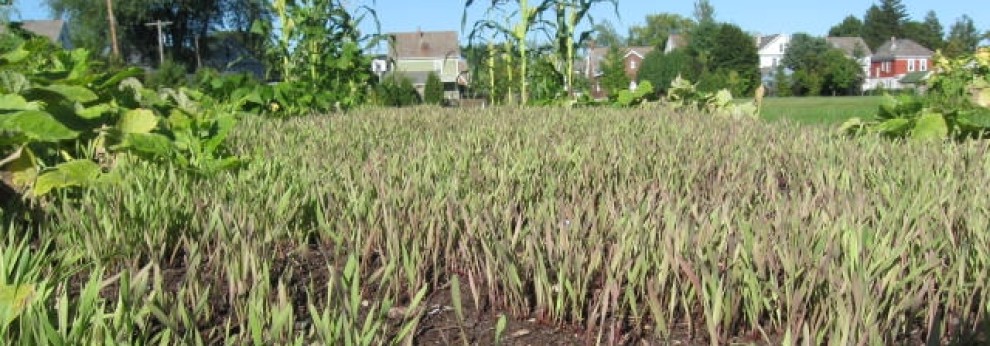 Imagine a middle school where teachers can offer classes a change of scenery, and especially a change that will bolster seriously valuable contact with nature. And imagine a school where a greenhouse, with space for visiting classes to work, is warm enough in January to nurture slow growth of leafy green vegetables. Where a fruit tree orchard beckons. And where bird, mammal and insect habitat transform science lessons into close-up encounters.
Imagine a middle school where teachers can offer classes a change of scenery, and especially a change that will bolster seriously valuable contact with nature. And imagine a school where a greenhouse, with space for visiting classes to work, is warm enough in January to nurture slow growth of leafy green vegetables. Where a fruit tree orchard beckons. And where bird, mammal and insect habitat transform science lessons into close-up encounters.
With confidence that doing and touching and tasting and experiencing can energize students and teachers alike, that these simple acts can stimulate hunger for learning like little else, the Vegetable Project proposes development of these and other schoolyard amenities at Stephen and Harriet Myers Middle School. The proposal rests on the ideas that enriching whole-person teaching and learning is essential to unlocking the potential of Albany students, that test-prep focused teaching can only go so far and that the need for something different is urgent in a school district where just 28 percent of third through eighth graders are judged proficient in English and math, based on state tests. An enormous thanks go to landscape architects Liz Podowski King of Highland Planning and Mary Moore Wallinger of LAndArt Studio for their extraordinary vision of how space around the Vegetable Project’s garden at Myers could become a place for endless outdoor teaching and learning.
We have written about the educational value of outdoor instruction and an outdoor classroom occasionally over the years. And after watching the no-win quandary of in-person vs. remote learning during the coronavirus pandemic, we would argue that building contact with nature into teaching and learning is more important now than ever. And we would add that the completed outdoor classroom project at Myers will lift spirits. It will promote teacher and student wellbeing. It will build equity. It will pave the way for similar initiatives elsewhere in Albany. It will captivate the parents who think the grass is greener on the other side of the city-suburb line. And it will draw interest of educators from miles around.
Really bringing this idea to life, however, will be daunting. Making great use of such an outdoor classroom amenity will require a huge shift in thinking by educators, maybe a journey, or even a bit of a cultural revolution, for those who think of classroom management in command-and-control terms more than the result of inspiration and engagement. That said, we know that it will be a rewarding journey of epic proportions.
–Bill Stoneman



